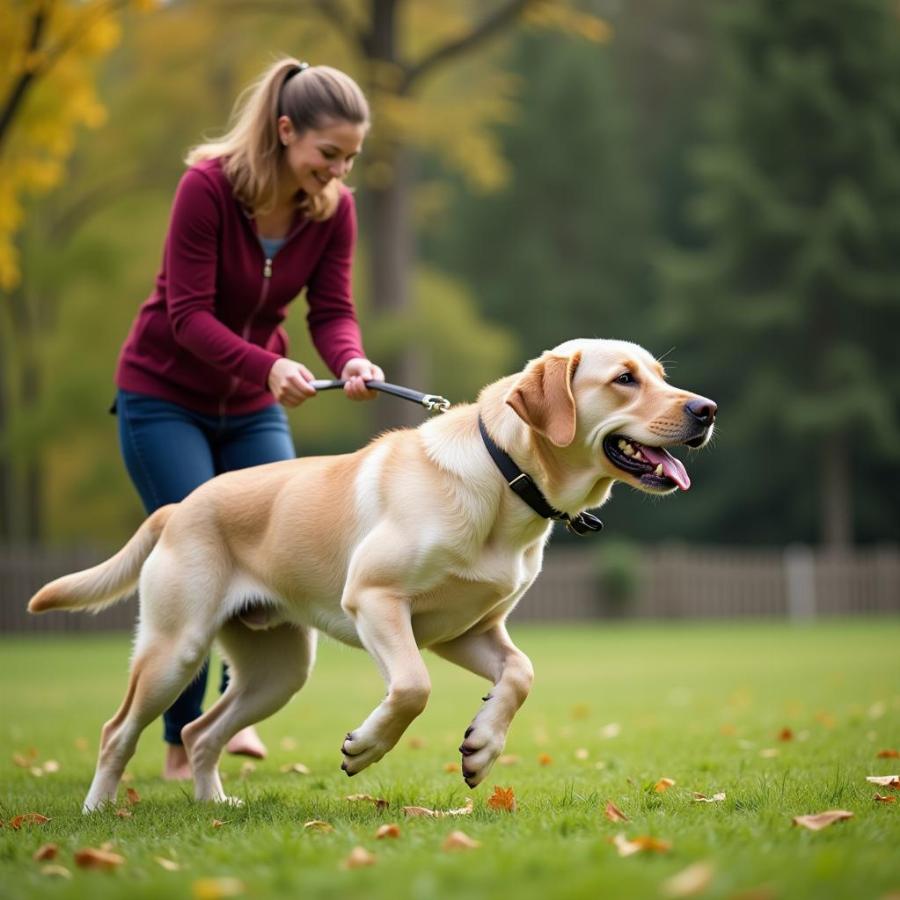Have you ever gazed into your furry friend’s eyes and wondered about their intelligence? The question of the “average IQ of dog” is a common curiosity among dog lovers. While our canine companions might not be solving complex equations, their intelligence manifests in fascinating ways.
While we can’t measure a dog’s intelligence on a human IQ scale, research suggests their cognitive abilities are closer to a two to two-and-a-half-year-old human child. This means they can understand up to 250 words, respond to basic commands, and even demonstrate emotional intelligence.
Deciphering Doggy Intelligence: Beyond the Numbers
Attributing a single number to a dog’s intelligence doesn’t paint the full picture. Dogs, like humans, possess different types of intelligence:
- Instinctive Intelligence: This refers to breed-specific skills, like a Shepherd’s herding instinct or a Retriever’s love for fetching.
- Adaptive Intelligence: This reflects a dog’s problem-solving abilities and how quickly they learn from their environment.
- Working and Obedience Intelligence: This measures a dog’s ability to learn and follow commands.
Ranking Canine Intelligence: The Stanley Coren Study
Dr. Stanley Coren, a renowned canine psychologist, conducted a groundbreaking study ranking dog breeds by their intelligence. He focused on “working and obedience intelligence,” measuring how quickly different breeds could learn and obey new commands.
According to Coren’s research, Border Collies, Poodles, and German Shepherds topped the list, demonstrating exceptional learning abilities. However, it’s crucial to remember that every dog is unique, and breed alone doesn’t define intelligence.
Signs of a Smart Pup: It’s Not Just About Tricks
While performing tricks is impressive, a dog’s intelligence shines through in everyday interactions. Watch for these signs:
- Quick Learning: Does your dog master new commands with ease?
- Problem Solving: Can they figure out how to get a treat from a puzzle toy?
- Communication Skills: Do they understand your tone of voice and body language?
- Adaptability: How well do they adjust to new environments and routines?
Nurturing Your Dog’s Potential: Engagement is Key
Regardless of your dog’s breed or perceived intelligence, providing a stimulating environment is crucial.
- Engaging Training: Use positive reinforcement techniques to teach commands and tricks.
- Puzzle Toys: Challenge their minds with interactive toys that require problem-solving.
- Socialization: Expose them to various sights, sounds, and experiences to enhance adaptability.
- Plenty of Play: Playtime isn’t just fun; it’s mentally stimulating and strengthens your bond.
Celebrating Our Canine Companions: Beyond Intelligence
While understanding a dog’s intelligence is fascinating, it’s essential to appreciate them for the unique individuals they are. Their unwavering loyalty, unconditional love, and ability to brighten our days are far more valuable than any IQ score.
FAQs about Dog Intelligence:
Q: Do mixed breed dogs have different intelligence levels?
A: Mixed breed dogs inherit a combination of traits from their parents, making their intelligence levels just as varied as any purebred dog.
Q: Can you improve a dog’s intelligence?
A: While you can’t change their inherent cognitive abilities, consistent training, enrichment, and socialization can significantly enhance their learning and problem-solving skills.
Q: Are some dog breeds naturally more stubborn than others?
A: Yes, some breeds might require more patience and creativity during training due to their independent nature.
 Dog Training with Owner Using Positive Reinforcement
Dog Training with Owner Using Positive Reinforcement
Looking for more insights on understanding and caring for your beloved dog?
Check out these related articles:
At Beaut Dogs, we’re passionate about providing dog lovers like you with reliable and informative content on all aspects of canine companionship. If you’re seeking guidance or support on your dog ownership journey, don’t hesitate to reach out to us at [email protected]. We’re here to help!